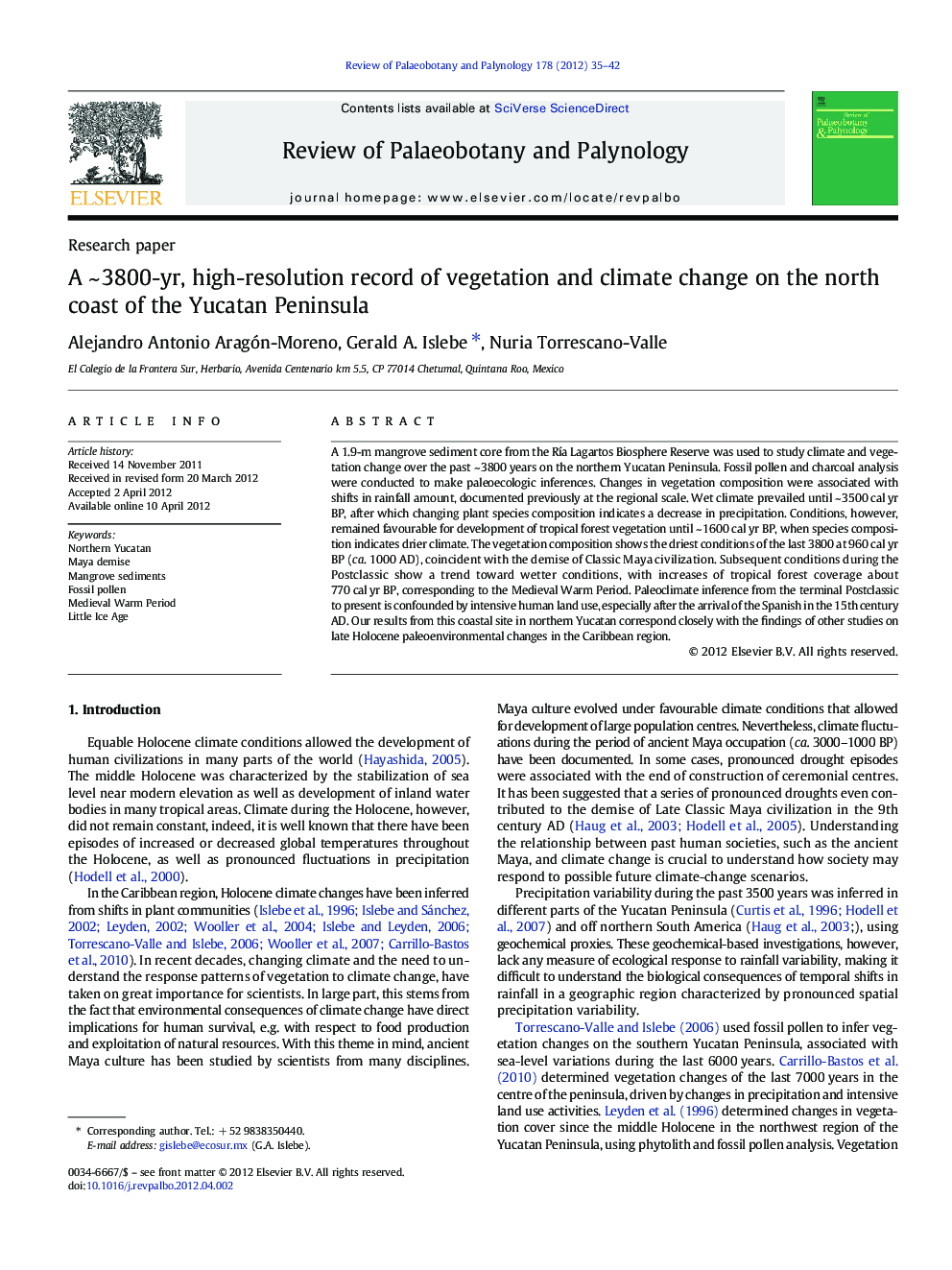| Article ID | Journal | Published Year | Pages | File Type |
|---|---|---|---|---|
| 4750555 | Review of Palaeobotany and Palynology | 2012 | 8 Pages |
A 1.9-m mangrove sediment core from the Ría Lagartos Biosphere Reserve was used to study climate and vegetation change over the past ~ 3800 years on the northern Yucatan Peninsula. Fossil pollen and charcoal analysis were conducted to make paleoecologic inferences. Changes in vegetation composition were associated with shifts in rainfall amount, documented previously at the regional scale. Wet climate prevailed until ~ 3500 cal yr BP, after which changing plant species composition indicates a decrease in precipitation. Conditions, however, remained favourable for development of tropical forest vegetation until ~ 1600 cal yr BP, when species composition indicates drier climate. The vegetation composition shows the driest conditions of the last 3800 at 960 cal yr BP (ca. 1000 AD), coincident with the demise of Classic Maya civilization. Subsequent conditions during the Postclassic show a trend toward wetter conditions, with increases of tropical forest coverage about 770 cal yr BP, corresponding to the Medieval Warm Period. Paleoclimate inference from the terminal Postclassic to present is confounded by intensive human land use, especially after the arrival of the Spanish in the 15th century AD. Our results from this coastal site in northern Yucatan correspond closely with the findings of other studies on late Holocene paleoenvironmental changes in the Caribbean region.
► We obtained 3800 years of environmental history in northern Yucatan peninsula. ► Circum-Caribbean dry events related to the demise of the Maya culture. ► Anthropogenic activities were less important in the zone. ► Tropical forest cover increased during Medieval warm period. ► Little Ice Age's signal is obscured by antropogenic activities.
